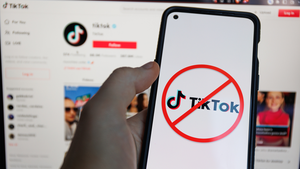Healthy food essential but inaccessible for low-income shoppers
The future of the CPG industry may hinge on its ability to provide healthy foods at accessible prices.
July 14, 2022

A recent white paper by NielsonIQ explored the impacts of—and obstacles facing—access to healthy foods for low-income consumers. Across CPG sectors, consumers are consistently focusing more on holistic health and wellness. However, even in countries like the U.S., numerous factors disrupt these strides toward collective health and wellness.
Trends in healthy foods tend to fall along economic dividing lines, with wealthier consumers being the most proactive in shaping their diet around health concerns and wellness goals. Lower-income consumers have many of the same health concerns, but may lack the financial resources to personally implement change in systematic and sustainable ways. USDA estimates that 53.6 million U.S. residents have limited access to healthy food, usually in low-income areas. This has not diminished the general trends like vegetarian diet and environmentally conscious packaging—healthfulness and sustainability are no longer solely the province of upscale grocery stores and high-cost products.
The authors of the white paper asserted that increasing access to healthy food products across all income brackets will be essential for future success in the CPG industry. “In order to be competitive in retail, CPG brands and retailers must convey to their customers that health and wellness does not have to be a luxury, but a standard available to all,” the authors wrote. “Expanding a customer base and brand impact in 2022 requires putting in the work to better serve every type of consumer seeking healthy, affordable product attributes. There is far more risk for brands that do not prioritize systemic consumer health and environmental sustainability priorities.”
The numbers bear this out: Per Nielson, 67% of U.S. consumers agreed that companies have an obligation to produce healthy products, and to make the healthy products less expensive than processed and unhealthy ones. American consumers no longer view health benefits as an extra that should be paid up for, but as a manufacturer’s essential responsibility. They echoed these concerns when it comes to sustainability: They make decisions with their health in mind, but also the health of the planet. Consumers resoundingly want fewer single-use plastics and more eco-friendly packaging.
The report highlighted the growth of poor health outcomes and disease diagnoses among low-income Americans. Diabetes, in particular, is identified with more positive outcomes for high-earning families and poorer outcomes for low-income families. Due to skyrocketing insulin costs, proper diabetes care is often cost-prohibitive. Additionally, following a diabetes-conscious diet is reported more often among high-income families.
These growing disparities highlight the need for manufacturers to provide access to healthy, sustainable products at an accessible price point. These are the incontrovertible factors facing the growth of CPG industries, and ones that are only likely to increase in significance in coming years.
About the Author(s)
You May Also Like






